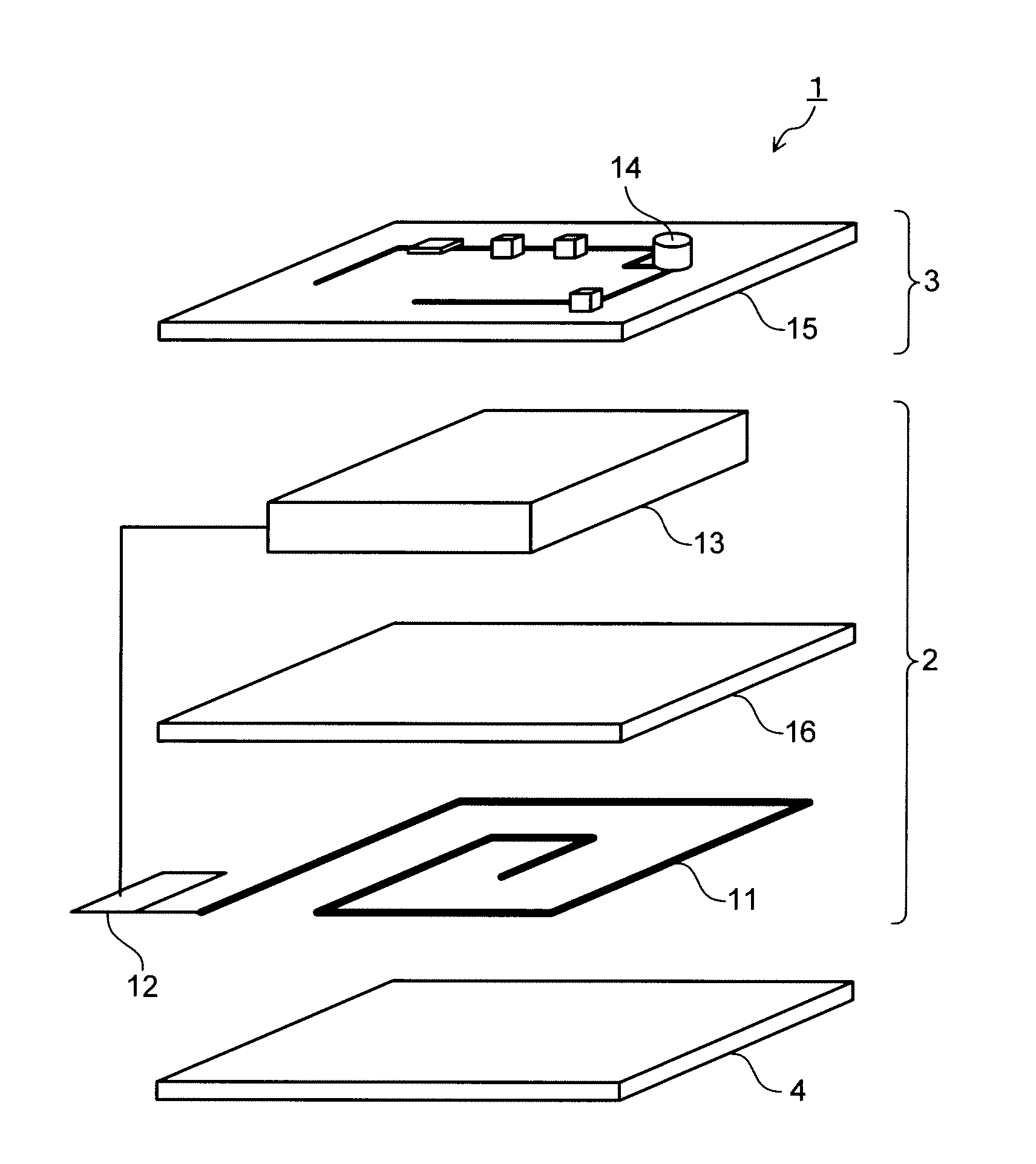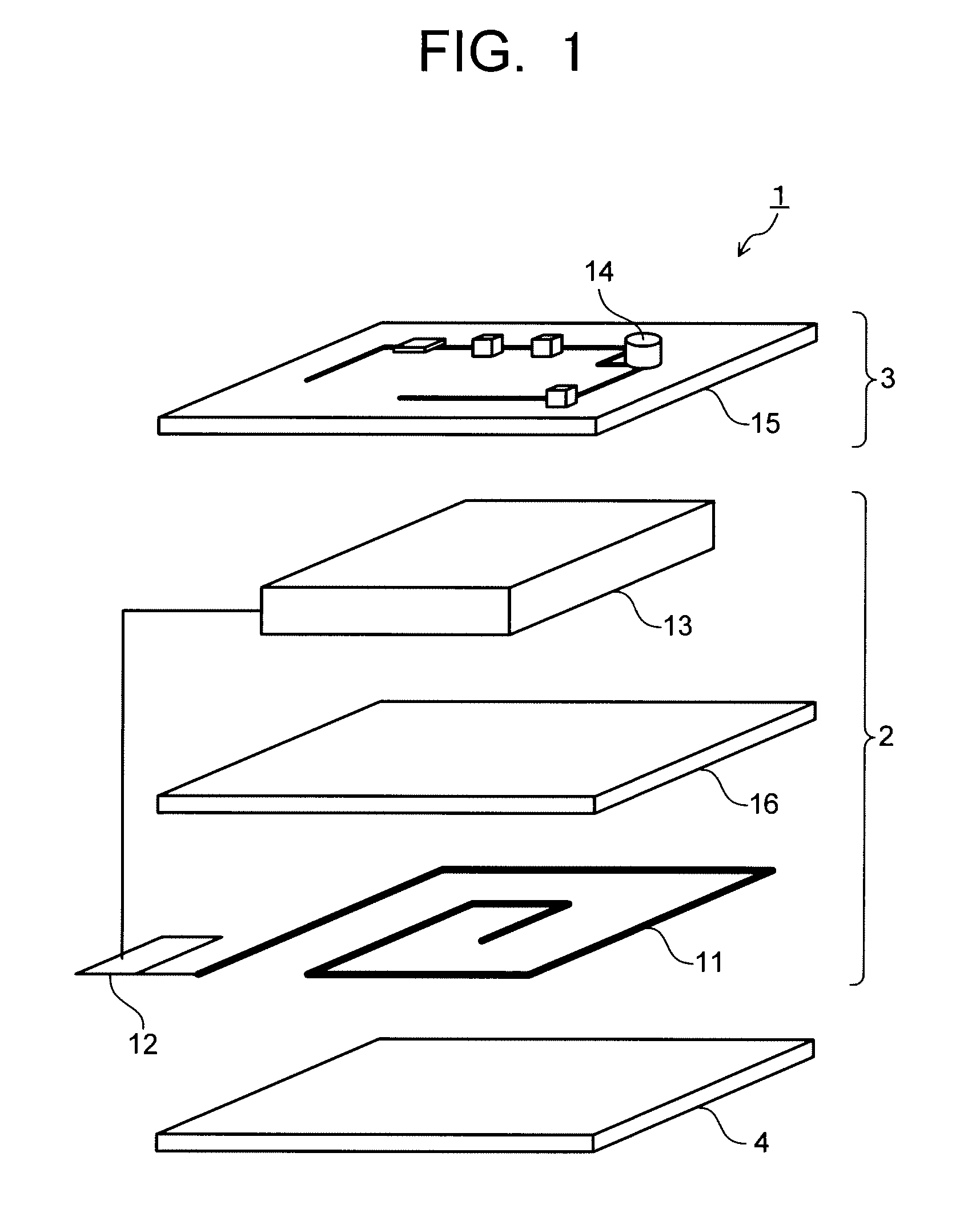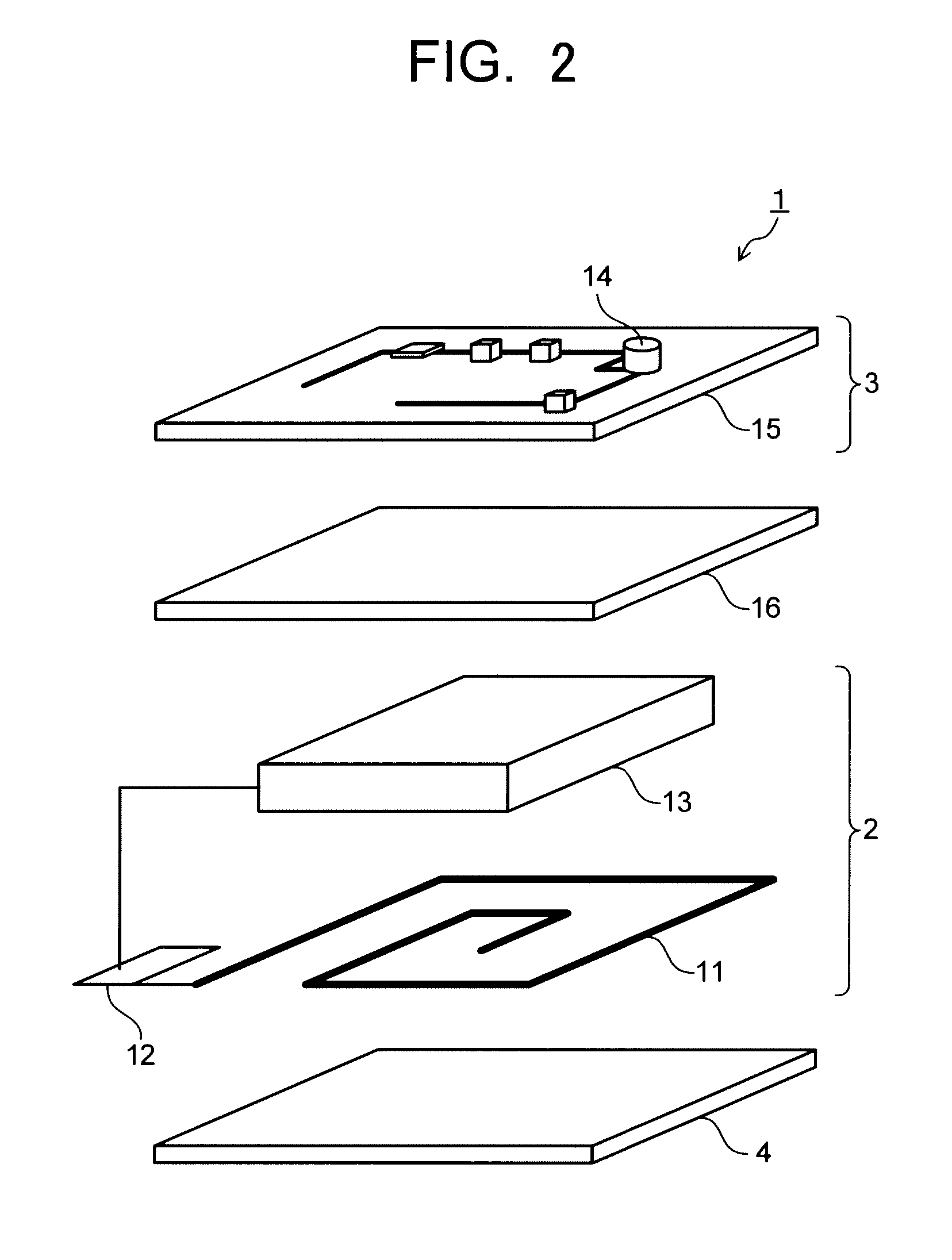Power receiving device, and electronic apparatus and non-contact charging system using the same
a technology of power receiving device and electronic equipment, which is applied in the direction of secondary battery servicing/maintenance, electrochemical generators, safety/protection circuits, etc., can solve the problems of reducing reducing the capacity and needs of secondary batteries, and increasing the weight of electronic equipment, so as to reduce the efficiency of power receiving and suppress heating
- Summary
- Abstract
- Description
- Claims
- Application Information
AI Technical Summary
Benefits of technology
Problems solved by technology
Method used
Image
Examples
example 1
[0083]As a magnetic foil, there was prepared an amorphous alloy thin ribbon with a real component μr′ of relative permeability of 5000, an average plate thickness of 18 μm, and constitution of CO70Fe5Si5B20 (atomic ratio). No thermal treatment is performed on the amorphous alloy thin ribbon. The amorphous alloy thin ribbon has a shape with the protruding amount do of the outer peripheral portion being 6 mm. This amorphous alloy thin ribbon was arranged, as shown in FIG. 1, between the secondary coil (power receiving coil 11) and the secondary battery 13. A mobile phone using a power receiving device having such a magnetic foil and the non-contact charging system were designated as example 1.
examples 2 to 10
[0084]Using an amorphous alloy thin ribbon with the same constitution as the example 1, power receiving devices were made similarly to the example 1 except that the thermal treatment condition, the average plate thickness, and the number of stacks are changed to the conditions shown in Table 1. Mobile phones using these power receiving devices and non-contact charging systems were designated as examples 2 to 10.
examples 11 to 14
[0085]As magnetic foils, amorphous alloy thin ribbons each having constitution of Fe78B14Si8 (atomic ratio) were prepared. The thermal treatment condition, the average plate thickness, and the number of stacks of these amorphous alloy thin ribbons are as shown in Table 1. Power receiving devices were made similarly to the example 1 except using such amorphous alloy thin ribbons. Mobile phones using these power receiving devices and non-contact charging systems were designated as examples 11 to 14.
PUM
| Property | Measurement | Unit |
|---|---|---|
| thickness | aaaaa | aaaaa |
| charging time | aaaaa | aaaaa |
| thickness | aaaaa | aaaaa |
Abstract
Description
Claims
Application Information
 Login to View More
Login to View More - R&D
- Intellectual Property
- Life Sciences
- Materials
- Tech Scout
- Unparalleled Data Quality
- Higher Quality Content
- 60% Fewer Hallucinations
Browse by: Latest US Patents, China's latest patents, Technical Efficacy Thesaurus, Application Domain, Technology Topic, Popular Technical Reports.
© 2025 PatSnap. All rights reserved.Legal|Privacy policy|Modern Slavery Act Transparency Statement|Sitemap|About US| Contact US: help@patsnap.com



